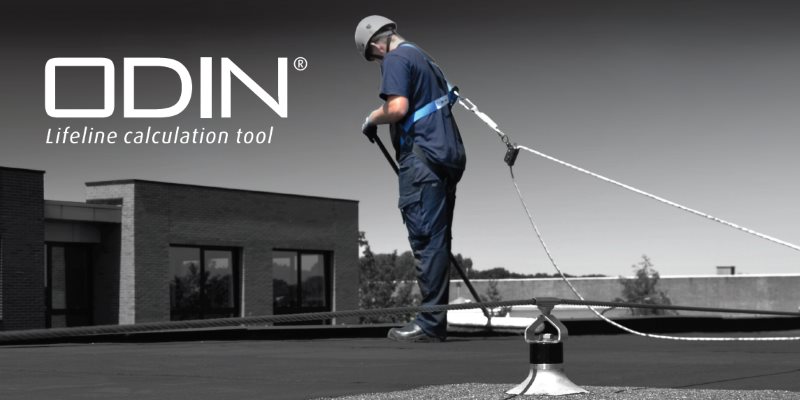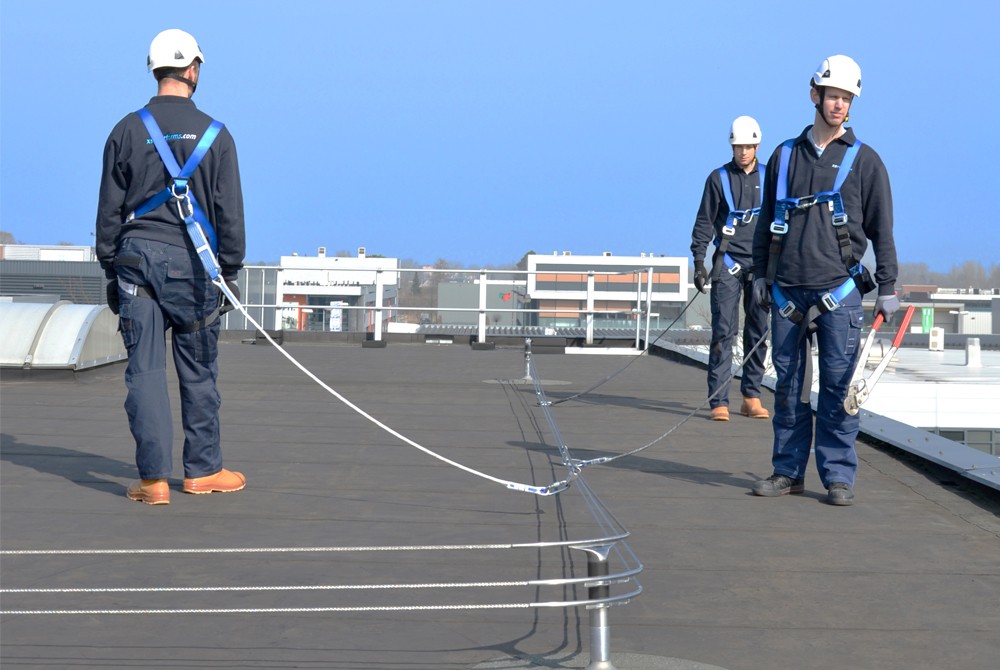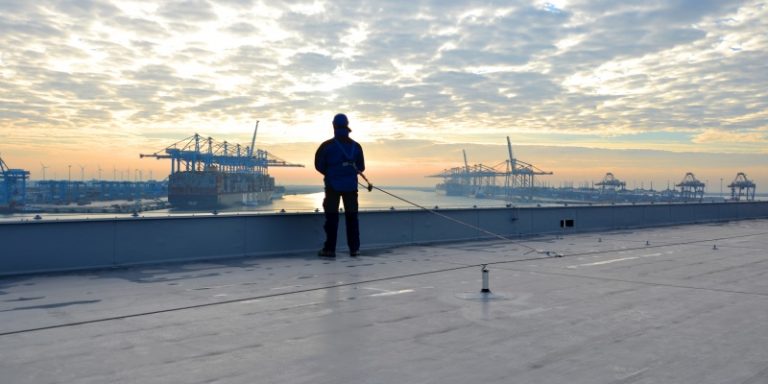Designing engineered horizontal lifelines with the ODIN tool
An engineered horizontal lifeline system is an excellent fall protection measure for those who have to move around while working at height. The lifeline, spanned between multiple anchor points, can be installed in roof, wall and overhead situations, over long lengths. An engineered system is especially fitting for areas at height where work has to be carried out frequently. A calculation tool is needed at custom engineered projects.
Custom engineered projects
Permanently installed horizontal lifelines are often custom engineered to fit a project. Engineering a horizontal lifeline seems like an easy task. But a horizontal lifeline is more than just a steel wire between two anchor points. Before installing a lifeline system a lot of calculations have to be made. The loads that the system and building structure must be able to handle in case a fall occurs, the deflection of the system and the fall clearance available for a project are just some of the important variables that determine if a system is safe to use or not.
These calculations are difficult and time consuming to execute by hand, and leave room for miscalculation. This is why, at XSPlatforms, we developed a tool to calculate engineered (or lifeline) systems. With ODIN you can get an engineered horizontal lifeline designed specifically for a project along with the documentation that the system complies with the OSHA and/ or CSA criteria.



